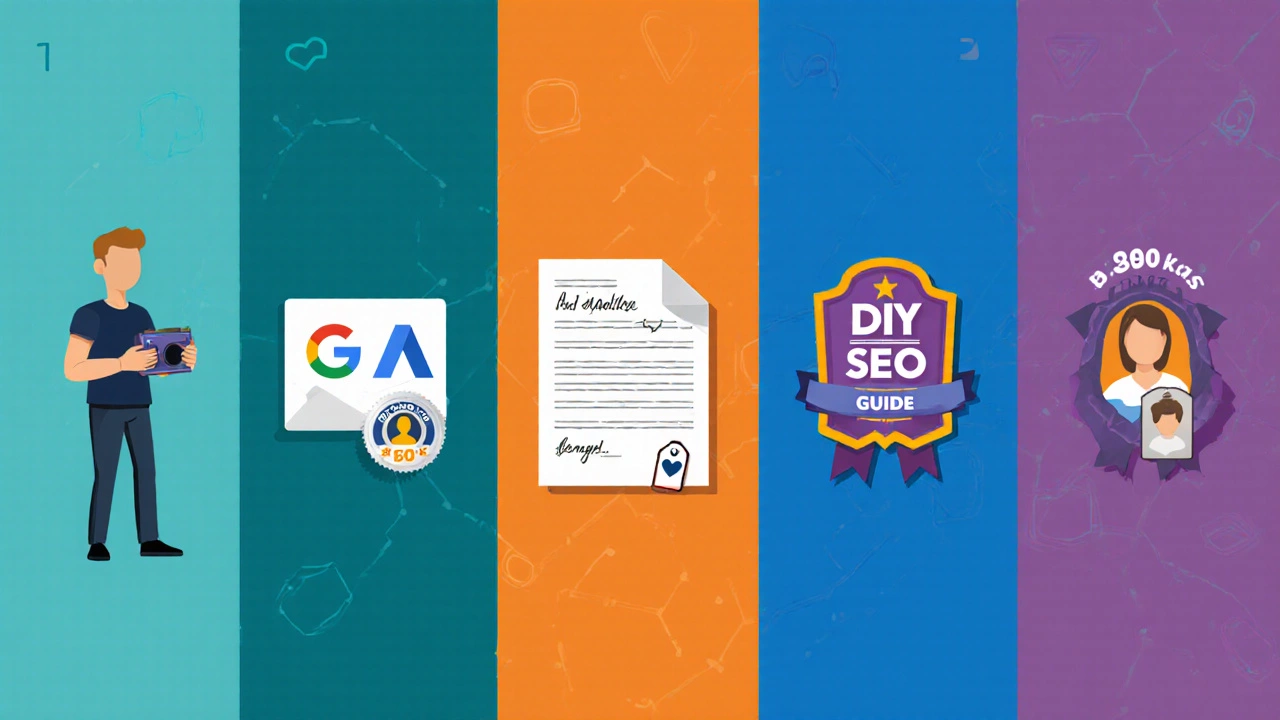Blog Monetization Calculator
Your Blog Traffic
Monetization Methods
Calculation Results
Enter your traffic and select methods to see estimated earnings.
When people ask “Do blogs still make money?” the answer hinges on Blog Monetization. In 2025 the landscape has shifted, but the core principle remains: good content plus a clear revenue path equals cash.
Quick Takeaways
- Blogging can still be profitable, but success depends on niche, traffic quality, and diversified income streams.
- Affiliate marketing and digital product sales now eclipse traditional display ads for most creators.
- Building an email list is the single most reliable way to protect revenue against algorithm changes.
- Automation tools and AI‑assisted writing cut production costs, boosting profit margins.
- A step‑by‑step launch plan reduces trial‑and‑error and gets the first dollar in under three months.
Why Blog Monetization Still Works in 2025
According to data from the Global Content Industry Report 2025, blogs collectively generated $4.2 billion in ad and affiliate revenue last year - a 7 % increase from 2024. The growth is driven by three forces:
- Specialized audiences: Niche blogs attract readers who are further down the buying funnel, making them premium ad inventory.
- Cross‑platform synergy: Bloggers now repurpose posts into YouTube Shorts, TikTok clips, and newsletters, expanding reach without extra content creation.
- Direct-to-consumer products: Courses, templates, and membership sites let creators keep 80‑90 % of the sale price.
In short, the money isn’t gone - it’s just redistributed across more channels.
Top Revenue Streams for Modern Blogs
Below are the five most reliable ways to earn a living from a blog today. Each entry includes a micro‑definition so search engines can link the concept directly.
Affiliate Marketing- Best for product‑review blogs and tech niches.
- Commission rates range from 5 % to 50 % depending on the merchant.
- Tools like ThirstyAffiliates or Skimlinks simplify link management.
- Works well for high‑traffic blogs with broad audiences.
- Average RPM (revenue per mille) in 2025 sits around $12‑$18 for English‑language sites.
- Ad blockers reduce earnings; consider ad‑recovery scripts to mitigate loss.
- Requires a clear media kit and audience metrics.
- Typical rates: $150‑$500 per 1,000 pageviews, higher for authority sites.
- Transparency (FTC disclosure) protects credibility.
- High profit margin - you keep most of the sale price.
- Best when the product solves a specific problem highlighted in your content.
- Platforms like Gumroad, Podia, or Kajabi handle checkout and delivery.
- Ideal for creators with strong personal brands (e.g., newsletters, private forums).
- Average churn rate in 2025 is 5‑7 % per month; engagement is key.
- Use tools like Patreon, Memberful, or Substack.

Comparison of Monetization Methods
| Method | Revenue Potential | Setup Complexity | Ongoing Effort |
|---|---|---|---|
| Affiliate Marketing | Medium‑High | Low | Medium |
| Display Ads (AdSense) | Low‑Medium | Very Low | Low |
| Sponsored Posts | High | Medium | Medium |
| Digital Products | High | Medium‑High | Low‑Medium |
| Memberships | High‑Very High | High | High |
How to Start Monetizing a New Blog - A Step‑by‑Step Blueprint
- Pick a profit‑ready niche. Use Google Trends and Ahrefs Keyword Explorer to find topics with >10 k monthly searches and low competition.
- Build a solid foundation. Choose a fast, SEO‑friendly platform (WordPress.org on a managed host). Install a lightweight theme and set up Yoast SEO.
- Produce cornerstone content. Write 5‑7 long‑form posts (2,000 + words) that answer the most common questions in your niche. Optimize for the primary keyword and include internal links.
- Capture email addresses from day one. Offer a free checklist or mini‑e‑book in exchange for an email. Connect the form to ConvertKit or MailerLite.
- Insert affiliate links. Choose 2‑3 high‑commission programs (Amazon, ShareASale, or niche‑specific partners). Use deep‑linking to relevant product pages.
- Apply for ad networks. Once you hit 5,000 monthly pageviews, sign up for Google AdSense or Mediavine. Place ads above the fold and in the sidebar for maximum visibility.
- Reach out for sponsorships. Draft a one‑page media kit (traffic, demographics, rates). Email brands that sell to your audience; offer a guest post or product review.
- Launch a digital product. Convert a popular post series into an e‑book or video tutorial. Price it $19‑$49 and promote it via your newsletter.
- Test a membership tier. Offer “behind‑the‑scenes” content for $5‑$10 per month. Start with a trial period to gauge interest.
- Track everything. Use Google Analytics, Ahrefs Site Explorer, and affiliate dashboards. Adjust strategies based on RPM, conversion rates, and churn.
Following this roadmap, many first‑time bloggers report $500‑$1,200 in net profit within the first three months.

Common Pitfalls and How to Dodge Them
- Relying on a single income stream. If Google changes its ad algorithm, your revenue can drop overnight. Diversify early.
- Skipping email list building. Traffic is fickle; an email list gives you direct access to readers.
- Choosing a saturated niche without a unique angle. Aim for a sub‑niche where you can become the go‑to expert.
- Neglecting SEO. Keyword gaps are low‑hanging fruit. Optimize titles, meta descriptions, and image alt text.
- Over‑promoting products. Readers notice when content feels like a sales pitch. Keep the ratio roughly 80 % useful content, 20 % promotional.
Future Trends Shaping Blog Revenue
Even if you master the methods above, staying ahead means adapting to new tech.
- AI‑generated drafts. Tools like Jasper and Claude can produce outlines in seconds, freeing you to focus on research and personalization.
- Short‑form video integration. Embedding TikTok or Reels within posts boosts dwell time, which improves ad rankings.
- Community‑first platforms. Services such as Circle and Discord let you charge for access without building a full‑blown membership site.
- Voice search optimization. More users ask Siri or Alexa for niche answers; structuring content with schema helps capture that traffic.
The bottom line? Blogs that blend evergreen content with modern monetization tactics still earn money - often more than ever.
Frequently Asked Questions
How long does it take for a new blog to become profitable?
Most bloggers see their first $100‑$200 month within 2‑3 months if they follow a focused launch plan, but reaching a stable six‑figure income usually takes 12‑18 months of consistent traffic growth and diversification.
Is affiliate marketing still worth it compared to display ads?
Yes. Affiliate commissions often outweigh ad RPMs because they pay per sale instead of per click. In 2025 the average affiliate commission for tech gadgets sits around 8‑12 %, whereas display ads average $15 RPM.
Do I need a personal brand to sell digital products?
A strong personal brand accelerates sales, but you can also succeed by positioning the product as a solution to a specific problem and using case studies, testimonials, and free trials.
What’s the safest way to protect my blog’s revenue from ad‑blockers?
Offer a “whitelisted” experience: prompt users to disable blockers for a better reading experience, or switch to native video ads and sponsored content that ad‑blockers can’t hide.
Should I start with a free blogging platform or self‑hosted WordPress?
Self‑hosted WordPress gives you full control over monetization plugins, SEO tools, and data ownership. Free platforms limit ad networks and affiliate integrations, which caps earning potential.
Bottom line: blog monetization is alive, but it rewards creators who combine solid SEO, diversified income streams, and a direct relationship with their readers.
